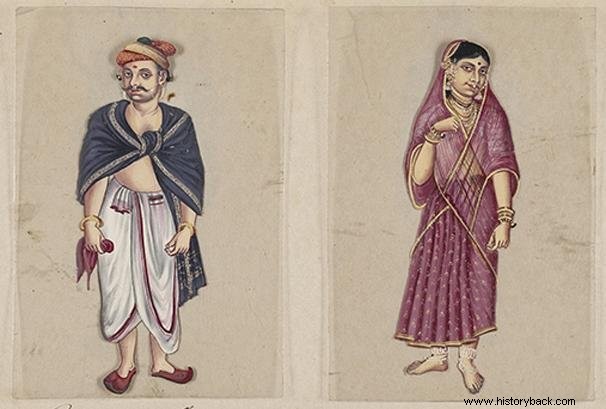The caste system in India it is a model of organizing society in class divisions based on religious precepts.
In this system, the stratification of society occurs according to the birth of the individual in a given family.
This belief is based on the book Veda , which would be the holy scripture for the Hindus. Therefore, those born in a lower caste are paying for their past life sins and must accept their karma .
Indian Castes
The Indian or Hindu caste system is characterized by heredity and stratification.
The division into hereditary castes originated with the Hindu religion, but was abolished by the Indian government in 1947, when it gained independence.
In society, especially in rural areas, the caste system remains because practitioners believe that changing castes is disrespectful. In this way, marriages between people of different castes are prohibited.
Even friendships and work relationships are defined by the caste to which a person belongs.
See also:Stratified SocietyCharacteristics of Hindu castes
Initially, there were four well-defined castes, but currently, it is estimated that these can reach up to 4 thousand.
The castes are passed from father to son and each one has its gods, its territory and its territory.
Likewise, skin color was essential in determining the caste to which a person belonged. Individuals with the lightest skin tone were linked to privileged castes.
Below you can see the four main castes in India.
Brahmins

Compared to the gods, the highest caste is formed by the Brahmins who are priests, teachers and philosophers. Brahmins believe that the head of the god Brahma was born.
See also:HinduismXhatrias

Further down are the Shatrias, the military and members of the administration. Supposedly, they would have been born in the arms of the god Brahma, so they are considered warriors.
See also:Indian cultureVaixas

Below come the Vaishas, who think they were born from the legs of Brahma and act as traders and merchants.
Sudras

Finally, the Sudras, who would have come from the feet of the god, are workers, artisans and peasants.
See also:Ancient IndiaDalits
Apart from the caste system are the untouchables, also called haridhans, haryans and, finally, dalits. Indians believe that Dalits are the result of Brahma's foot dust.
This group represents about 16% of Indians and they suffer all the cruelty imposed by the caste system. They can only wear clothes that belong to corpses, they cannot drink from the same water sources as those protected by the caste system and they can only carry out activities considered dirty, such as dealing with garbage or corpses.
They are considered unclean, living in isolation and in extreme poverty. Prevented from climbing the social ladder as a result of heredity, they are not considered human beings. Dalits suffer all kinds of violence, as well as social, physical and sexual.
One of the people who fought to give a more dignified life to Dalits it was the religious Mother Teresa of Calcutta, as well as the Buddhists, who reject this caste system.
See also:IndiaThere are more texts on this subject for you :
- Estate Society
- Independence of India
- Mahatma Gandhi
